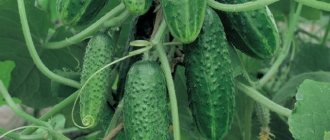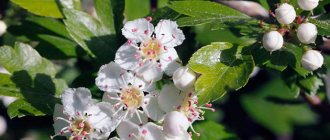Lilac is one of the most popular ornamental shrubs, which gardeners from many countries around the world choose to decorate their plots. Lilac is chosen not only because of its alluring and bright aroma, but also because of its ease of cultivation. There are many varieties of lilac, but in this article we will talk about the Amur lilac, which is popularly called “crackling”. The shrub deserves this unusual name because of the characteristic loud cracking sound that can be heard if you throw lilac branches into the fire.
Amur lilac - description
- Amur lilac belongs to the Olive family, Lilac genus.
- The birthplace of Amur lilac is considered to be Manchuria, China, Korea, the Amur region, the Khabarovsk region, and the Primorye Territories.
- Amur lilac was discovered in 1855, and received its first botanical description in 1857 by Russian botanists.
- Amur lilac in the wild prefers to grow on mountain slopes, on the banks of reservoirs, in mixed forests, and in bushes.
- Amur lilac in the wild can reach 20 meters in height. Under favorable conditions in the garden it can grow up to 10 meters.
- Amur lilac is considered a long-living tree, as it can grow in one place for about 100 years.
- The trunk of the Amur lilac can reach 30 cm in diameter. It is covered with dark gray, brown bark.
- Amur lilac leaves can reach from 5 to 11 cm in length and have an elliptical shape, which is characteristic of most other varieties of lilac. With the arrival of autumn, the leaves of the Amur lilac acquire golden or purple hues, which gives the tree even greater decorative value.
- A distinctive feature of Amur lilac is that it blooms somewhat later than ordinary lilac. The period of active flowering begins in late June or early July. Amur lilac blooms with white or slightly cream flowers, which are collected in inflorescences with a length of about 20-25 cm and a diameter of about 20 cm. Lilac flowers are very small - about 5-6 mm in diameter. Amur lilac blooms for about 3 weeks.
- After the end of the flowering period of Amur lilac, seed pods form in place of faded inflorescences. The seeds are quite large - about 1.5 mm long and about 6 mm wide.
- Amur lilac is an excellent option not only for decorating a private garden, but also for decorating city streets. The plant is very hardy, has a highly developed root system, is drought and frost resistant. The “sister” of the Amur lilac is considered to be the Japanese lilac.
Types of Amur codfish
And currently they sell the seeds of the Amur lilac, which is called “Sudarushka”. This species is rarely grown in our regions, but gardeners are actively trying to grow this shrub. The described lilac, unlike others, has a large number of trunks and a large size.
When winter ends and warming comes, the leaves of the Amur lilac have a purple-green color, after which the leaf blade begins to gradually darken. The flowers of this plant are not large in size, but they are collected so abundantly that they form quite large inflorescences. The shade of the petals is white.
The flowering process of Amur lilac does not last long, about 3 weeks. However, at this time you can be completely satisfied with the beauty and attractiveness of the bush. The flowering period begins around June, resulting in each flower being equipped with four petals. Inflorescences form only at the tips of new fresh shoots, so you should steadily trim the bush and shape its crown. In addition to their beauty, the flowers have a very pleasant aroma that attracts pollinators.
Amur lilac: photo of tree
Ecological properties of Amur lilac
- Amur lilac is often chosen for planting not only because of the high decorative value of this crop, but also because of its ability to strengthen the soil. This variety of lilac has an unusually developed root system, thanks to which the banks, slopes, and hills are strengthened. It is especially useful to plant Amur lilacs near bodies of water.
- Amur lilac is an excellent honey plant. The unusually pleasant and strong aroma attracts bees and other insects.
- Amur lilac is highly resistant to polluted city air. It is for this reason that this culture is often chosen for beautifying public gardens, parks, and busy streets in cities. Amur lilac grows well even on poor and rocky soils, decorating and transforming any area.
Reproduction
Amur lilac is propagated in several ways:
- seeds;
- cuttings;
- layering;
- vaccination.
In late autumn, in wet weather, you can collect the seeds. The boxes are then dried at room temperature for several days. To stratify the seeds, they are mixed with damp fine sand in a ratio of 1:3 and left in any container that has holes for water drainage. It should be in a cool room (no more than +5 degrees). Experienced gardeners use the bottom shelf of the refrigerator for this purpose.
Amur lilac Sudarushka
Buying Amur lilac is not always easy. The common lilac is much more popular. But in large gardening stores you can buy seeds of the most famous variety of Amur lilac - Sudarushka. The multi-stemmed shrub can reach 10 meters in height. The bark is very similar in appearance to cherry tree bark. Lilac Sudarushka is prone to changing leaf color during the growing season. When blooming, the foliage is greenish-purple in color, in summer it is dark green, and in autumn the leaves turn purple and gold. Lilac blooms with small white flowers, collected in paniculate inflorescences up to 25 cm long.
This variety actively attracts bees during flowering with its strong honey aroma. Amur lilac seeds Sudarushka must undergo stratification before planting. If the seeds are sown in the spring, they are kept at a temperature of 0-5 degrees for 2-5 months. Autumn planting of seeds is also acceptable. In this case, there is no need to subject the seeds to artificial stratification. The variety is known for its frost resistance, drought resistance, resistance to city dust and polluted air. The life cycle of a shrub can be 90-100 years.
Long-lived lilac: everything you need to know to grow luxurious Amur lilac
Amur lilac is a beautiful ornamental tree.
In nature, Amur lilac is common in the Far East, Primorsky Territory, Amur Region, as well as in eastern China and Korea. The tree is used not only as a decorative tree, but also as a soil strengthener. In its natural environment, lilac grows on mountain slopes and in wooded areas.
The selection of this crop began in the 19th century. During this time, many varieties of wood were developed. Amur lilac is called a long-lived tree, since it can grow in one place for 100 years.
Interesting! The type of lilac is also called cracker. This may be due to the fact that when old branches are burned, the branches produce a loud cracking sound that can be heard even at a distance of more than 10 meters. Another assumption is that this name is associated with cracking of the seed pods.
In nature, the crop can grow up to 20 meters. In cultivation, on average, a tree grows up to 10 meters. The tree is distinguished by a wide spreading crown, which looks magnificent not only during the period of abundant flowering, but also in the fall due to its numerous green foliage.
In the first years after planting, the tree develops extremely slowly. Lilacs acquire their luxurious appearance only when they are 10 years old . The trunk has a diameter of about 30 cm. The bark of the trunk visually resembles the bark of a cherry tree. It is dark red in color when young and then dark gray in color.
The leaves of Amur lilac are no different from the leaves of other varieties of the crop. They can reach 11 cm in length, heart-shaped in shape, and dark green in color. With the arrival of autumn, the leaves change their color. This is a distinctive feature of the Amur centenarian. They take on purple and golden hues.
Also, the difference between this variety is that it blooms somewhat later than ordinary lilac. Flowering begins in mid-June and lasts for three weeks .
White flowers of 4 petals with elongated stamens are small in size - only 5 mm in diameter. They are collected in large paniculate inflorescences. The inflorescences are about 25 cm in diameter and length. The flowers have a very pleasant aroma that attracts not only people, but also insects.
Amur lilac does not produce fruit. However, the faded buds contain seeds, which can later be used to grow new bushes.
Varieties
Only seeds of the Sudarushka variety can be found on sale. Manufacturer: Agrotechnical (Russia). When purchasing Amur cod seedlings, it is very difficult to identify the varietal variety. At the moment, this is not such a common type of lilac as, for example, the Common lilac.
Sudarushka is the most common variety of Amur lilac. The shrub has a dense and spreading crown. Its height can reach 10 meters. The leaves are about 10 cm long. When blooming, the leaves are light green in color, in the summer they become dark green, and in the fall they acquire purple and golden tones.
The small flowers are white or slightly cream in color. They have an incredibly pleasant honey aroma. The flowers are collected in large (up to 25 cm) panicle-shaped inflorescences. Flowering begins closer to July and lasts for three weeks. Fruit formation and flowering begin no earlier than 9 years after planting the bush using seeds.
The variety is resistant to urban conditions and frost. The codfish can live up to 100 years. Sudarushka looks impressive in group and single plantings, when creating hedges and various landscape compositions.
It is advisable to plant Amur lilac at the end of the summer or at the beginning of the autumn season. If you plant a plant at this time, there is a chance that the seedling will have time to take root before the cold weather sets in. If the leaves on the seedlings have already fallen off, then it is too late to plant them in the ground.
To plant a bush, you need to dig a hole, the dimensions of which should be 50 by 50 centimeters. It is recommended to add organic fertilizers and wood ash to the soil. It is recommended to plant a seedling in the late afternoon, when it is cool outside.
When planting, you need to pay attention to ensure that the root collar of the seedling is flush with the ground.
Important! In order for the plant to take root better, it is recommended to purchase seedlings that have a closed root system. This will facilitate not only the planting process, but also the further care of the seedling.
Despite the fact that codling is considered an unpretentious crop, caring for it requires certain skills and compliance with a number of features.
Watering and humidity
First of all, the crop needs fertile and constantly loosened soil. Therefore, loosening and weeding of weeds around the bush is very important. Weeds generally pose a danger to young specimens, since Amur lilac has a superficial root system.
Important! Weeds such as dandelions, wheatgrass and squash are very dangerous for lilacs.
In the summer season, the bush needs to be watered abundantly, pouring about 20 liters of water per square meter. If it rains frequently, watering is reduced. With the beginning of autumn, it is recommended to stop watering, and water only during severe drought.
Overflow is dangerous for lilacs. They can cause premature appearance of buds on the shoots, and in winter the root system can freeze.
Important! In case of drafts and strong winds, it is recommended to increase the amount of water for irrigation.
If the crop grows near highways or in the city, then the leaves need to be cleaned of dust and dirt by spraying with water.
Feeding
Codfish needs a large amount of fertilizers and nutrients, including potassium, nitrogen, phosphorus, calcium and other elements.
Fertilizers containing nitrogen can be applied a year after planting the crop.
Also, mullein infusion, chicken droppings and manure are effectively used as fertilizers.
Trimming
Tree pruning begins when the lilac is three years old. At the same time, shoots that go deep into the crown are cut off. Branches that spread along the ground or grow downwards are also removed.
Formative pruning is carried out in the spring, and at the end of flowering, faded inflorescences are trimmed. It is advisable to prune in spring before the buds appear.
Pruning will give the bush a beautiful and attractive appearance, and it is also an excellent incentive for the development of new young shoots with buds.
Propagation by seeds
Seeds can be purchased in stores and nurseries, or you can collect them yourself. Growing a plant from seeds is a fairly simple process. The seeds are collected at the end of autumn. It is best to do this in cloudy or rainy weather, then the seeds will not spill out of the boxes.
The boxes need to be dried in a dry place for several days, and then the seeds must be carefully removed.
To stratify the seeds, it is recommended to mix them with moistened sand and place them in a container with holes at the bottom for draining water. The temperature at which seeds are stratified should not exceed 5 degrees Celsius. For example, you can put a container with them in the refrigerator.
The soil for sowing seeds needs to be prepared and steamed. Seeds must be sown 2 months after stratification .
Store-bought seeds do not need stratification, since they are sold already peeled.
Where to buy seedlings
You can purchase shrub seedlings at nurseries and gardening centers, or order them through the mail.
| Seedling height | Where can I buy | Price | About the nursery |
| 30-40 cm | Savvateev nursery (Moscow region, Tula, Belgorod) | 350 rubles | The nursery is adapted to the conditions of central Russia. The variety is not designated. |
| 20-60 cm | Online store "Lesodar" | 300 rubles | The company is engaged in the professional cultivation and sale of coniferous and deciduous trees and shrubs. The seedling variety is not indicated. |
| 120-180 cm | TO Agronomist (Novosibirsk) | 740 rubles | The company is known for the professional cultivation and sale of seedlings, and also provides landscape design services. The seedling variety is not indicated. |
Application in landscape design
The culture is resistant to urban conditions. In connection with this, it is often used for landscaping parks, squares and city alleys.
Culture is great for decorating the front entrances of buildings.
The codfish looks great near reservoirs, both natural and artificial. Near bodies of water, lilacs bloom more profusely, and the inflorescences become larger.
Single planting of Amur lilac along the fence.
Since the plant is long-lived and also has a dense and wide crown, it is often used to create hedges.
Amur cod goes well with other types of lilacs, low-growing shrubs, annual and perennial flowers.
The codfish looks great against the backdrop of low-growing shrubs .
Good partners can be:
- Peonies;
- Boxwood;
- Shiny cotoneaster;
- Drummond Maple;
- And others.
What Amur lilac looks like - on video
With the help of a video from the FORUMHOUSE thematic channel, you can evaluate what a hedge made of Amur lilac will look like.
Source: https://1decor.org/rasteniya/kustarniki/siren-amurskaja.html
Amur lilac - photo
Description of Hungarian lilac
It was not by chance that the Hungarian lilac received its name. This compact shrub was introduced into garden culture in an almost unchanged “wild” form, almost did not lend itself to selection and cannot boast of a good varietal palette. In nature, it is just as easy to recognize among other plants as in a collection of garden shrubs. In its natural environment, Hungarian lilac is mainly distributed in the Carpathian regions, in the north of the Balkan Peninsula and in Hungary. It is considered a relict plant and a protected species protected at the legislative level. This type of lilac was introduced into culture earlier than other less popular species - since 1830. And since then, Hungarian lilac is considered one of the most reliable types of lilac for regions with harsh winters and one of the best candidates for urban landscaping, designing small gardens or using in flower beds of any size.
In the entire genus Lilac (Syringa), it is difficult to find a plant more compact than the Hungarian lilac (Syringa josikaea). This plant is limited to a maximum of 3-4 m even in its natural environment. The diameter of the crown is always less than the height, which is why the lilac appears slender and graceful. At the same time, the shrub develops quite quickly, but, having reached its optimal size, it is then characterized by amazing crown stability and practically does not change. The Hungarian lilac seems to be a constant, unchanging and stable island in the company of its relatives. The crown is most often neat, strictly rounded by nature, and does not require shaping. The shoots of this lilac are erect, beautifully and densely branched, directed upward, creating an openwork crown that is quite attractive even in winter. The color of the bark of old shoots is indistinguishable from other lilacs, but the young purple-violet branches bring a pleasant revitalization to the spring garden. This type of lilac does not produce root shoots, which somewhat complicates propagation, but it opens up new prospects for use in garden design.
Hungarian lilacs are most easily identified by their leaves. They are very similar in shape to other types of lilac, but the hairiness of the underside (along the midrib) and the ciliated edge make this species easy to identify. No other species of lilac has leaves that retain this characteristic. The length of leaves in adult shrubs reaches 13 cm. Depending on the characteristics of the soil and growing conditions, the leaves of Hungarian lilac can be either broadly elliptical or more lanceolate. But the depressed veins almost always clearly appear on them. The change in color of the leaves of the Hungarian lilac is not the most spectacular, but still serves as a decoration for the garden. The dark green color of the summer crown gives way to purple spots in the fall, and the bizarre purple-lilac color of the upper side of the leaf blades is combined with the yellowish-golden tone of the pubescent underside.
The flowering of Hungarian lilac is, of course, inferior to popular garden species in terms of showiness and massiveness. But in its delicacy it surpasses them many times over. The loose panicles produce an exceptionally elegant impression; they contain only non-double, rather small, but pleasantly fragrant, long-tubular flowers. In the inflorescences, the tiered structure and narrowed shape are more clearly visible (it is the tiered structure that makes it easy to distinguish this type of lilac from its relatives). The diameter of Hungarian lilac flowers never exceeds 1 cm, but the length of the magnificent panicles can reach up to 30 cm. After flowering, cylindrical red fruit boxes ripen, which ripen in mid-autumn, but can remain on the bush until spring.
Hungarian lilac in the Botanical Garden of Moscow State University. © Kor!An
One of the main advantages of Hungarian is the great variability of the color palette. The color of flowers on a plant depends not only on the age of the tree, but even on the weather, composition and characteristics of the soil; it can change from season to season and differ from previous years. In this case, we are not talking about a radical change in color, but only about a difference in color saturation and tone intensity.
The flowering of Hungarian lilac usually begins two to three weeks after the common lilac. The first flowers bloom in panicles at the end of May, but the main flowering always occurs at the beginning of June. In general, the flowering of Hungarian lilac lasts just over 3 weeks (from 20 to 25 days).
Amur lilac - planting
Where does Amur lilac grow - choosing a location
Amur lilac grows well in the wild even in very unfavorable conditions. However, to achieve the most beautiful and lush flowering of lilacs, it is important to take care of choosing the right place for planting. Try to adhere to the following recommendations:
- Amur lilac has a very negative attitude toward wetlands, low-lying areas, and areas close to the groundwater surface;
- When choosing a place to plant Amur lilac, give preference to well-lit areas. In shady places, under the dense crown of tall trees, lilacs will not bloom as profusely as they could;
- When choosing a planting site, try to avoid areas with strong winds and drafts.
What soil does Amur lilac prefer?
Amur lilac will grow especially well in soil that has the following characteristics:
- the soil must be permeable;
- the soil must be nutritious;
- the soil should be enriched with organic fertilizers;
- the soil should be slightly acidic or neutral, 6.0-7.5 pH;
- the soil should be well moistened, but not swampy.
If clay and heavy soil still predominates on your site, then you can make the conditions for Amur lilac more comfortable very simply. You can purchase ready-made soil in the store that has all the characteristics listed above and use it to fill the planting hole.
When to plant Amur lilac
Beginner gardeners are always concerned about the timing of planting. When should Amur lilac seedlings be planted in open ground? In the climatic conditions of the middle zone, it is recommended to plant this crop in late summer or early autumn. It is these planting dates that guarantee good rooting of seedlings. It is also worth noting that only those Amur lilac seedlings that have green leaves can be planted. If the leaves have fallen, then the planting time has already passed, and you should wait for the next season. If Amur lilac transplantation is required, it can be done in the second half of summer. At this time, a period of rest begins for lilacs. The time between digging up and planting lilacs in a new place should be kept to a minimum. And immediately after planting, the surface of the earth must be mulched with wood ash.
Technology of planting Amur lilac
- Approximately 2-3 weeks before planting, begin to prepare a place for planting Amur lilac. Thoroughly loosen the soil, remove weeds and their roots. There is no need to apply any fertilizers when loosening the soil, since they will be added directly to the planting hole.
- Digging a planting hole. It should be about 50-60 cm wide and deep. If the soil on the site is too poor, then dig a hole with a width and depth of about 100 cm so that there is room for applying fertilizer. To fill the hole, you can purchase ready-made nutrient soil in the store or add wood ash or any organic fertilizer to the soil.
- In the center of the planting hole, build a small mound of nutritious earthen mixture. Place the seedling on top of this mound.
- Holding the seedling with one hand, begin to fill the planting hole with the other hand. The seedling must be shaken periodically so that the soil evenly fills all the air voids between the roots.
- After filling the planting hole, the root collar of the Amur lilac should be level with the ground.
- Immediately after planting, water the Amur lilac and mulch the tree trunk.
Planting and caring for Amur lilacs
The development and flowering of Amur lilac largely depends on compliance with planting rules. First, a suitable place is chosen for the shrub. Then the pit is prepared and the sequence of work is followed.
Recommended timing
The best time for planting Amur lilac is the period from the second half of July to the first ten days of September. If work is carried out in spring or autumn, the seedling does not take root well. In this case, the bush will not produce growth in the first year. For planting, choose a cloudy day or evening.
Site selection and soil preparation
Amur lilac prefers sunny places, but can also grow in partial shade. Wetlands and lowlands are not suitable for planting. Even short-term stagnation of water in the soil leads to rotting of the roots.
Moderately moist, well-drained soil is suitable for Amur lilac. The best option is humus fertile soil, neutral or acidified. If the soil on the site is heavy and dense, then a drainage layer must be provided at the bottom of the planting hole. For this purpose, small crushed stone or broken bricks are used.
To increase soil fertility, a substrate is prepared. Mix 15 kg of humus, 200 g of wood ash, 30 g of superphosphate. The components are thoroughly mixed. River sand is added to clayey soil, which is highly dense.
How to plant correctly
The order of planting Amur lilac:
- Dig a pit measuring 0.5x0.5x0.5 m. On sandy and poor soils, its dimensions are increased to 1x1x1 m.
- A drainage layer 10 cm thick is poured onto the bottom.
- Then the prepared substrate is moved into the pit.
- The soil is watered abundantly and left for 1 - 2 weeks to shrink.
- When the soil settles, fertile soil is poured into the hole to form a small hill.
- Inspect the plant, cut off too long roots. Dry and damaged areas are also removed.
- A seedling is placed on top, its roots are straightened and covered with soil.
- Amur lilac is watered abundantly.
- The shoots of the seedling are shortened by 2 - 3 buds.
- In the tree trunk circle, make a mulching layer of peat or humus 5 cm thick.
Amur lilac - care
Watering Amur lilac
- Amur lilac loves moist soil, so regular watering is very important for this plant. Lack of moisture negatively affects the appearance of lilacs. The bush begins to fade, flowering ceases to be so abundant. Insufficient watering is especially dangerous on sandy soils.
- Despite the fact that Amur lilac loves moist soil, under no circumstances should the soil clod be allowed to become waterlogged. If you allow severe water retention at the roots of the plant for 1-2 days, the lilac may even die.
- Water the plant more often and more abundantly in the first half of summer; in the second half of summer, watering is gradually reduced, and in the fall it is removed altogether. But you always need to focus on the weather conditions in a particular region at the moment. If the second half of summer turns out to be too dry, then watering is not reduced. If it has been an extremely hot and dry autumn, it may be too early to stop watering.
- If you do not stop watering Amur lilacs in the fall, then in winter the root system of the shrub may freeze.
- If the summer is rainy, then watering should be reduced or removed altogether.
- Experienced gardeners advise increasing the volume of water when watering if the place where the Amur lilac grows is too windy.
- In summer, one plant should require about 20 liters of water.
- It is best to water Amur lilac in the evening, like most other ornamental shrubs in the garden.
- The younger the Amur lilac, the smaller the irrigation area.
- If the air where Amur lilac grows contains any gas (for example, sulfur dioxide), then the plant cannot be sprayed. Spraying can cause harmful acid to form on the leaves.
Loosening and removing weeds around Amur lilac
Each watering of Amur lilac must be combined with loosening the soil and removing weeds. If the lilac grows near the road, on a city street, then regular spraying is carried out to clean the leaves.
- If you mulch the soil surface around the Amur lilac, then the need to loosen and remove weeds will occur less frequently.
- A crust should not be allowed to form on the soil surface.
- If the soil surface has not been mulched, then about 3-4 loosening procedures may be needed during the growing season.
- The soil around the Amur lilac should be loosened to a depth of 4-7 cm.
- Weeds can pose a serious danger not only to Amur lilac, but also to any other ornamental plant on the site. Weeds are especially dangerous for young plants.
- Particularly dangerous weeds for Amur lilac are dandelions, gooseberry, and wheatgrass.
Feeding Amur lilac
Gardeners' opinions are divided regarding the frequency of fertilizing and its necessity for Amur lilac. Some experts advise starting to apply nitrogen fertilizers already in the second year after planting, which will contribute to better development of the root system and good shoot growth. Adherents of this theory propose the following fertilizer application scheme:
- The first fertilizing of Amur lilac with nitrogen fertilizers can be carried out in early spring. You can apply fertilizer even when the snow has not completely melted;
- the second fertilizing with nitrogen fertilizers should take place after 3 weeks;
- The third fertilizing with nitrogen fertilizers is also carried out approximately after 3 weeks, but no later than August.
Other gardeners believe that any fertilizing should be applied only in the 2nd or 3rd year after planting. They should be entered according to the following scheme:
- The first feeding is carried out in early spring at the moment the buds awaken. It is better to give preference to ready-made complex mineral-organic fertilizers;
- The second feeding of Amur lilac is carried out approximately after 3-3.5 weeks. At this time, it is better to apply a solution of cow manure or bird droppings. Depending on how old the lilac is, you may need from 1 to 3 buckets of such liquid organic fertilizer;
- The third feeding of Amur lilac is also carried out approximately 3-3.5 weeks later with a solution of manure or droppings. It is also worth noting that the last application of fertilizers should be carried out no later than the beginning of August.
Pruning Amur lilac
Amur lilac is an ornamental shrub that requires mandatory pruning if you want to achieve lush and long-lasting flowering.
- Formative pruning of Amur lilac should begin in the 3rd year after planting. In early spring, before the buds awaken, shoots that go deep into the crown are pruned. The main branches should be those that give the plant height. Of course, diseased, broken branches should be removed, and root shoots should be removed. After flowering ends, faded inflorescences are removed. If there are shoots that spread along the ground, then they should also be trimmed.
- Sanitary pruning can be carried out at any time. Regularly inspect ornamental shrubs for diseased leaves and disease-deformed shoots and remove them in a timely manner.
Necessary growing conditions
It is not difficult to grow lilac bushes on your site, in the garden or in the courtyards of residential buildings. Lilac is unpretentious and, when standard agricultural technology conditions are met, responds with abundant flowering, serves as an additional green decoration and performs functions that strengthen the earth with strong and resilient roots. Carry out several activities for its stable growth and development:
- Prepare the soil: it should be a fertile area with loose soil. In the spring, apply nitrogen, potassium and phosphorus fertilizers.
- Regulate watering: at the beginning of flowering it should be significant (1-2 buckets per 1 square meter), later - more moderate. In rainy weather, watering should be canceled to prevent oversaturation of the root system with moisture.
- Preventive measures: they consist of constantly loosening the soil, removing weeds and dried inflorescences, fertilizing (once a month) and spraying with protective drugs against pests (if necessary).
Attention! Be careful not to overwater the lilac, especially its roots. This leads to their rotting and death.
As you can see in the photo, with such care, the plant grows healthy, beautiful, does not cause problems for its owners, only pleases the eye with its beauty and unique aroma. Reviews about Amur lilac are always the most positive:
- Vera (47 years old, Krasnodar) - “At the beginning, the Amur “sudarushka” took a long time to take root, but last year it was covered with snow, covered in flowers, like a white cloud.”
- Andrey (60 years old, Kazan) - “This variety of lilac is very unpretentious, but in severe frosts its young branches died, but in the spring it also bloomed, it did not disappoint, it’s beautiful.”
We recommend that you plant such a miracle in your garden; spend a little time, you will not regret it, looking at this snow-white beauty.
Methods of propagation of Amur lilac
Amur lilac from seeds
Amur lilac seeds can be bought in the store, or you can try to collect them yourself if this type of lilac already grows on your site. Get ready for the process of growing lilacs from seeds to be quite lengthy. Planting in open ground will be possible only several years after sowing the seeds. Let's look at approximate instructions for growing Amur lilac from seeds:
- If you decide to collect Amur lilac seeds by hand, then you need to do this in humid weather so that the seed boxes do not crack. The collected boxes should be dried at room temperature for several days, and then the seeds should be removed;
- Amur lilac seeds must be stratified before planting. To do this, place lilac seeds in damp river sand in a container with holes at the bottom. Place the seeds on the bottom shelf of the refrigerator, where they should sit for 2 months;
- After 2 months, prepare nutrient soil. Before immersing the seeds in it, be sure to pour boiling water over it;
- after the Amur lilac seedlings grow a little, it is necessary to pick them;
- After the root system of the seedlings has become a little stronger, the lilac can be planted in open ground. However, a couple of years must pass before transplanting to a place of permanent growth.
Propagation of Amur lilac by cuttings
Even an inexperienced gardener can try to propagate lilacs from cuttings. It can be propagated using green cuttings and woody cuttings. Let's consider an easier and more effective method - using green cuttings.
- Harvesting green cuttings should be done in the spring.
- Select a side shoot and use a sharp knife to separate a cutting about 15 cm long. The cut must be oblique, and the cutting must have at least 3 pairs of buds.
- Next, you need to shorten all the leaves on the cuttings and completely remove the bottom pair of leaves. Remove the tip of the shoot with a straight cut.
- Soak the cuttings in a solution of any root formation stimulator.
- Prepare the planting hole. Be sure to place a layer of drainage at the bottom, then add a layer of humus, then nutrient soil.
- Plant the cutting in the prepared hole.
- In order for the cuttings to take root, you need to create optimal conditions for this. You can root cuttings at home. If you do this in the garden, then you need to build a mini-greenhouse. Under no circumstances should the film touch the cuttings. The height of the greenhouse must be at least 50 cm.
- Water the cuttings and ventilate the greenhouse. Leaf falling is a normal process when rooting cuttings.
- Optimal temperature conditions are 20-25 degrees Celsius and 90-95% humidity.
- The greenhouse can be removed after approximately 1-1.5 months. Don't expect all cuttings to root. That is why you need to plant as many green cuttings as possible, so that later you can select the strongest specimens for transplantation to a permanent place of growth.
- Already in the fall, you can transplant rooted strong shoots of Amur lilac to a permanent place of growth.
Reproduction of Amur lilac by layering
If a fairly mature Amur lilac bush is already growing on your site, then you can try to propagate it using layering. This method involves bending a side shoot to the ground, waiting for it to take root and separate the new plant from the mother bush. Depending on how the layering is secured, the following methods are distinguished:
- simple bending of a lilac shoot . This method is the most popular. The side shoot of the Amur lilac is bent to the ground, secured with staples or pins and covered with soil. The cuttings should be watered and topped up with soil if necessary. Its own root system, which will allow the new plant to separate from the mother bush, will appear in about 4 years;
- Dahlem way . This method is used quite rarely due to the complexity of the process and its duration. Before propagating the Amur lilac bush in this way, you need to completely prune the shoots of the bush for 2 years. In the third year, when the shoots reach a height of 20 cm, you can begin the propagation process. Select a strong side shoot, find the first bud and make a cut in the bark just below it. The cut area needs to be wrapped with wire several times. Do the same with other side shoots of the bush. Shoots prepared for rooting must be sprinkled halfway with soil. In the fall, the cuttings are ready to be dug up, separated from the mother bush and transplanted to a new location;
- Chinese method of bending back a lilac shoot. This method is also called the horizontal layering method. In this way, you can propagate 3-4 year old Amur lilac bushes. In early spring, trenches about 2 cm deep are dug around the bush. Strong side shoots more than 1 year old are placed in these trenches. Using staples or other devices, the layers are fixed in the trenches. Then the wire is wrapped three times under each bud on the shoot. Layers are covered with soil and watered. After young shoots appear from the ground, you need to monitor the soil level. It should cover half the sprout. During the season you need to add soil about 3-4 times. Already at the beginning of autumn, young shoots of Amur lilac can be separated from the mother bush and grown for further planting in a permanent place of growth.
Propagation by seeds
Seeds can be purchased in stores and nurseries, or you can collect them yourself. Growing a plant from seeds is a fairly simple process. The seeds are collected at the end of autumn. It is best to do this in cloudy or rainy weather, then the seeds will not spill out of the boxes.
The boxes need to be dried in a dry place for several days, and then the seeds must be carefully removed.
To stratify the seeds, it is recommended to mix them with moistened sand and place them in a container with holes at the bottom for draining water. The temperature at which seeds are stratified should not exceed 5 degrees Celsius. For example, you can put a container with them in the refrigerator.
The soil for sowing seeds needs to be prepared and steamed. Seeds must be sown 2 months after stratification .
Store-bought seeds do not need stratification, since they are sold already peeled.
Diseases of Amur lilac
Like most other ornamental crops in the garden, Amur lilac can be infected with certain diseases. The most common of them are:
- mosaic _ This disease can be suspected by specific spots on the leaves of Amur lilac. The spots are round or irregular in shape and yellow in color. Gradually, the disease covers increasingly larger areas, the leaves become deformed, curl, wither and fall off;
- Late blight is a dangerous disease that often affects other varieties of lilac. A bush infected with this disease does not have buds, and the bark and shoots become covered with brown spots. An effective way to combat this disease is to spray the bushes with a solution of Bordeaux mixture, copper sulfate and water (for 1 bucket of water you will need 100 grams of lime and 100 grams of copper sulfate);
- ring spot . If you notice Amur stripes or irregularly shaped spots of light green or yellow color on the leaves of the lilac, this may indicate infection with a viral disease - ring spot. There are no effective ways to treat ornamental plants against viruses. It is better to dig up infected bushes and burn them to prevent the spread of the disease throughout the garden;
- necrosis _ Amur lilac bushes are most often exposed to this disease in cold and wet weather. The tops of the shoots begin to turn black and wither. An effective control measure is to regularly spray the bush with Bordeaux mixture for 2 weeks.
In order to avoid various diseases of Amur lilac, you need to take preventive measures. If you buy shrub seedlings, do it in trusted places. It is better to choose nurseries where you will be given a guarantee of the health of the lilac. If you grow lilacs from seeds, be sure to pour boiling water over the soil before planting young seedlings in it. It is also important to take care of the sterility of the instrument when pruning Amur lilac and to disinfect the cut sites. If you follow these simple rules and ensure the optimal regime of watering the plant, then you will not have to look for ways to treat any ailments.
Landing
Today, Amur lilac grows in many garden plots. Planting and caring for this plant is simple. This variety of lilac prefers open sunny areas, well protected from the winds. The area should be well-drained and not flooded in the spring, when active snow melting begins, and in the fall during prolonged downpours. Stagnation of water, even for a short time, can cause the death of young roots.
Lilac is unpretentious, but it will bloom profusely only on fertile, slightly acidic or neutral, loose soils that contain a lot of humus. It is recommended to lime acidic soils. Heavy clay soils can be improved by adding sand and humus to them. If groundwater is very close, drainage is necessary.
Before planting lilacs in planting holes, they must be filled with compost or humus and superphosphate. It is better to plant bushes in August, since in the spring the lilac buds swell early, and in this state the plant cannot tolerate transplantation. If your planting material is in containers, then you can plant them at any time.
Amur lilac in landscape design
The decorative value of Amur lilac is very high. Landscape designers very often choose this particular variety of lilac to decorate city squares, parks, and green areas along highways. The plant is known for its extraordinary resistance to adverse environmental conditions. Amur lilac is great for creating hedges. The thick green crown, which in summer becomes densely strewn with lush and fragrant snow-white inflorescences, attracts the attention of all passersby.
Amur lilac looks equally beautiful both in group plantings and in single ones. The shrub can be planted next to other varieties of lilac to emphasize the picturesque contrast. In addition, lilac connoisseurs will be able to enjoy the wonderful aroma even longer if they plant Amur lilac on the plot. After all, the bush begins to bloom approximately 3-4 weeks after the flowering of common lilac, for example.
Amur lilac goes well with the following ornamental crops:
- peonies;
- brilliant cotoneaster;
- boxwood;
- Spiraea Vag-Gutta;
- tamarisk;
- forsythia;
- mock orange;
- felt cherry;
- mahonia subbolifolia;
- weigella;
- Drummond maple and others.
Amur codfish is excellent for decorating recreation areas near water bodies. The close location of water will have a beneficial effect on the appearance of the plant, making the color of the foliage even juicier and brighter. Designers often choose this plant to decorate the front entrances of buildings.
Amur lilac can become a real pearl of your garden. A tall shrub with a dense green crown and huge snow-white inflorescences that emit a unique fragrant aroma will constantly attract your attention.
Basic rules of care
- Regular loosening of the soil.
- At the beginning of summer it is necessary to provide sufficient moisture. If the amount of precipitation is moderate, then watering can be increased slightly.
- From mid-summer and autumn, water as needed, not too much.
- In the first year of life, the bushes are watered no further than the planting hole; the older the lilac, the more the watering area is increased.
- If the bushes grow near the highway, in spring and summer, it is advisable to wash the foliage from dust with a stream of water.
- Regularly remove weeds, especially in the first years of bush life.
- Fertilize the soil with nitrogen and organic compounds.
- Forming a bush, removing faded inflorescences.
- Prevention and treatment of diseases.
- Destruction of pests.
Amur lilac is a deciduous multi-stemmed shrub that grows up to ten meters in height, with a beautiful strong light crown. It also looks great in a hedge, especially if you shape the bushes and stand alone. In autumn, the foliage becomes multi-colored, which gives the tree a special attractiveness.











